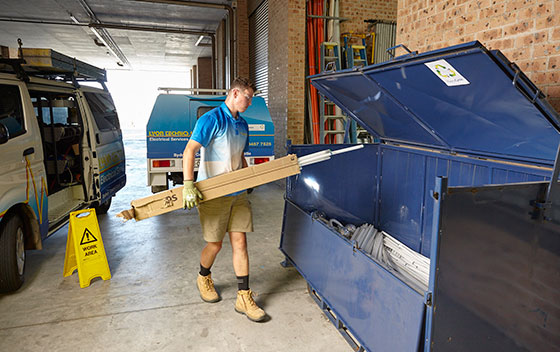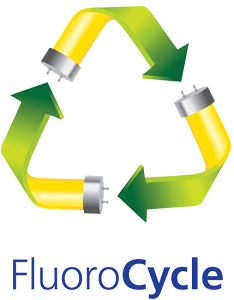HOW TO RECYCLE LAMPS THAT CONTAIN MERCURY
Removing Dangerous
Mercury Lamps…
the Right Way
Lyon Technics is committed to implementing sustainable practices that help to protect our environment. Reducing the amount of electrical waste sent to landfill is important to us and ensuring the safe removal of dangerous products is a priority.
That’s why we work to recycle mercury-containing lamps from our projects in a responsible and efficient way.

HOW RECYCLING MERCURY- CONTAINING LAMPS WORKS
There are two facilities in Australia that process the recycling and disposal of mercury-containing lamps. Located in both Sydney and Melbourne, waste lamps need to be collected and transported to one of these facilities in order to ensure the safest disposal possible.
You can arrange for waste collection companies to transport your mercury-containing lamps to one of the recycling facilities or they may provide collection bins that are dedicated to waste mercury-containing lamps to be installed at your premises.
In the recycling process, all components of mercury-containing lamps are recovered and separated, ready for re-use in the manufacture of other products, producing minimal waste.
FLUORO CYCLE
FluoroCycle is a national, voluntary scheme that is supported by all Australian governments. The scheme started operations in July 2010 and is designed to increase recycling of mercury-containing lamps in Australia.
FluoroCycle is focusing initially on the commercial and public lighting sectors, as these sectors are collectively the largest consumers of mercury-containing lamps, accounting for approximately 90 per cent of lighting waste.

IDENTIFYING LAMPS THAT CONTAIN MERCURY
Although mercury-containing lamps are not manufactured in Australia, there are still a variety of lamps that are imported and require mercury to operate. Generally, the higher the power usage or wattage, the more mercury required to operate the lamp. The most common lamps containing mercury in Australia include:
- Compact fluorescent lamps (CFLs) contain no more than 5 mg of mercury and are used mostly in homes.
- High-intensity discharge (HID) lamps contain between 50 and 1000 milligrams (mg) of mercury lights and include the mercury vapour lamps used for street lighting.
- Linear fluorescent tubes contain no more than 15 mg of mercury and are used in most commercial and public buildings.

